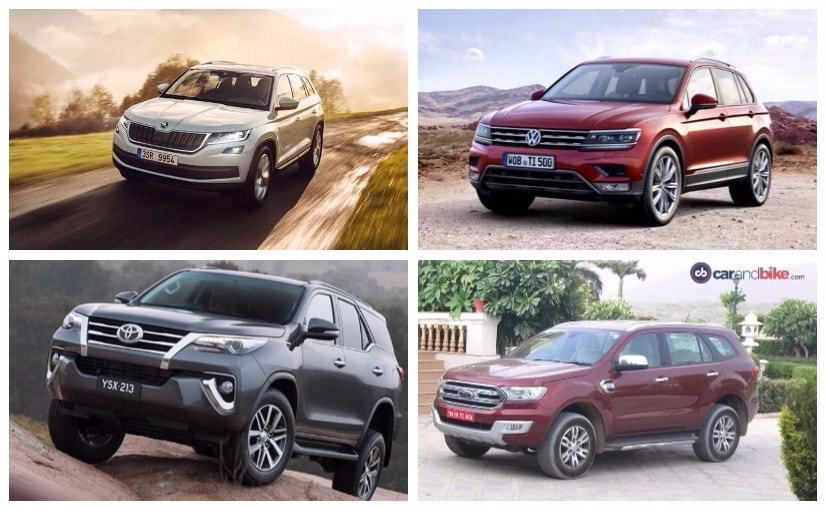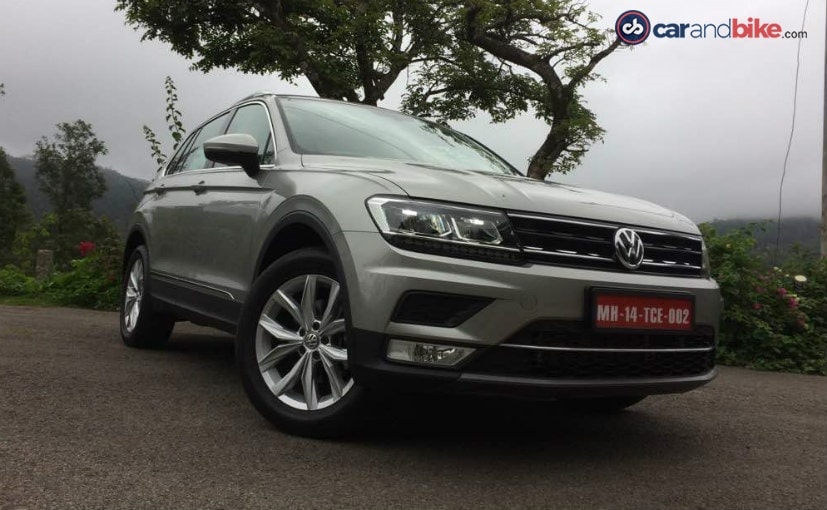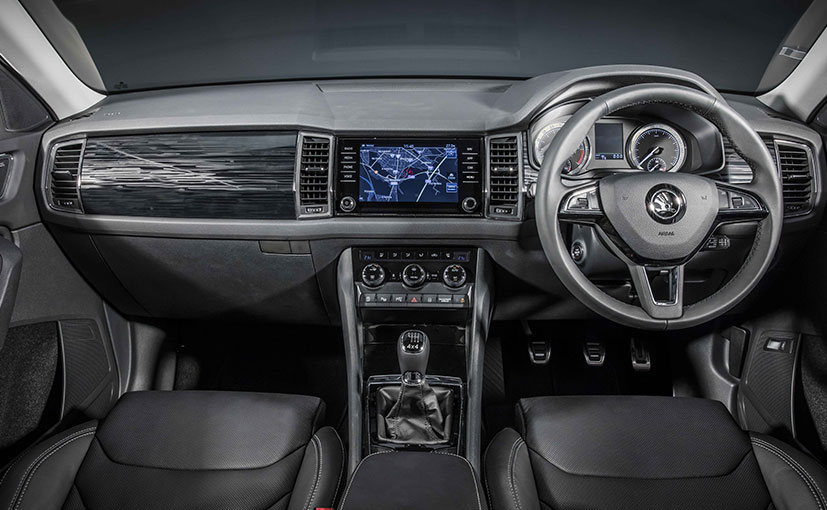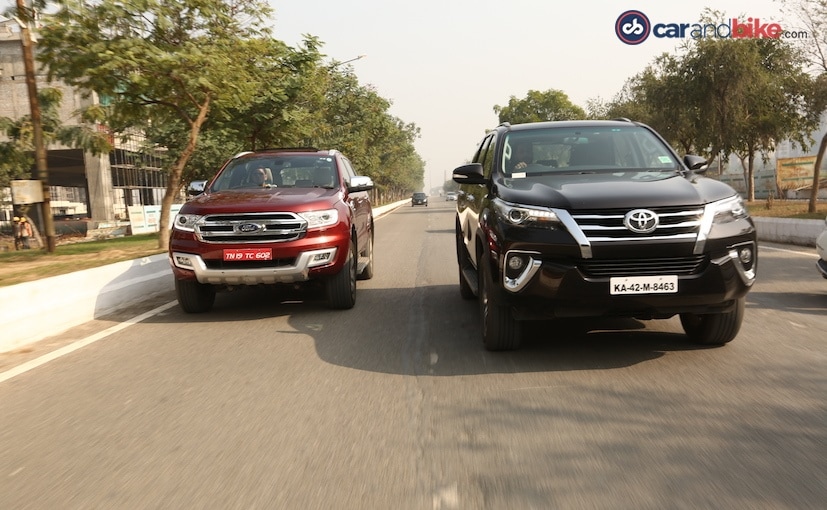
The Skoda Kodiaq has been in the news for quite some time. When it was first showcased last year, it was the personification of a new, bold and evocative design language from Skoda and was the flag-bearer of the company’s strategy with regards to SUVs in general. Taking its name from a species of bear found in Alaska, the Kodiaq is the first ever seven-seater SUV from Skoda and the company believes that it will be something of a game-changer once it is launched in India. But it is not going to be easy. The Skoda Kodiaq will have to take on established rivals such as the Toyota Fortuner, Ford Endeavour and Kodiaq’s cousin, the Tiguan. We take a look at how the Skoda Kodiaq stacks up against its primary competition.
Looks and Design
Quite a tough one here! All four SUVs in comparison here are good-lookers. The Endeavour is the oldest SUV here while the Kodiaq is the newest kid on the block. Honestly, in this case, it all boils down to personal choice. We will try and make it easier by the simple process of elimination. Between the Endeavour and the Fortuner, it is the former one that is the brawnier of the two. The front end is massive and exudes solid road presence. The Toyota feels a tad more sophisticated with its sharper business like front end.
On the other hand, choosing a better looking SUV between the Tiguan and the Kodiaq is akin to choosing the better looking kid from a pair of identical twins. Both these SUVs are made from the same mould and make use of the same platform, which is the VW Group’s MQB or Modular Transverse Matrix platform. In my opinion, the Skoda Kodiaq looks a tad better with its sleek, angular headlamps and the gloss black grille. Not that the Tiguan is not a good-looking car, but its Skoda cousin is the better looker. You are most welcome to disagree with me on that!
Between the Endeavour and the Kodiaq, my vote still goes to the Kodiaq. The reason being, it looks every bit as muscular as the Endeavour and still retains its air of sophistication. Imagine Jason Statham in a dapper suit, that’s the Kodiaq for you.

(The Volkswagen Tiguan is only a 5-seater)
Practicality
If you are spending close to ₹ 30-35 lakh for an SUV, you might as well want oodles of space and a whole lot of practicality in it, making your experience as comfortable as possible. In that regard, we are happy to say that all the SUVs in this on-paper comparo are practical enough to serve as your choice of daily ride. The Skoda and the Volkswagen SUVs make full use of their MQB platform and have the option to seat seven people and being compact at the same time. Bear in mind that the Fortuner and the Endeavour are bigger SUVs. The Kodiaq and the Tiguan also have rear seats which can be adjusted in multiple ways, in order to liberate space as required. The only catch is that the Tiguan is a 5-seater while the Kodiaq can be bought in a 7-seater avatar.
In comparison, the Endeavour and the Fortuner have always been 7-seaters and SUVs with proper off-road creds. In terms of size, the Endeavour is the biggest amongst the four cars here, with the Fortuner coming in at close second. The Kodiaq and the Tiguan are compact SUVs in comparison. As far as interior space is concerned, it is the Endeavour which wins the round.

(Skoda Kodiaq Cabin)
Interior and Equipment
The overall layout of the cabin is somewhat similar in the Kodiaq and the Tiguan. Both cars have well-appointed interiors and get an all-black treatment. The top spec models for each will get leather upholstery as well. The Fortuner too follows an all-black treatment but it does get some visual relief in the form of leather pillars guarding the centre console but it looks out of place if you really ask us. The Endeavour is the only SUV here which gets a dual-tone brown and beige colour scheme for the interior. Of course, the Fortuner and the Endeavour get leather upholstery as well.
Some common features to all the four cars in question are LED lighting elements, leather upholstery, touchscreen infotainment system with smartphone integration and ABS with dual airbags at the least. The top spec models of all the four SUVs get at least 6 airbags. Plus there are other creature comforts such as cruise control, rain-sensors, parking sensors, reverse parking camera and so on. Oh and both the Skoda Kodiaq and the Volkswagen Tiguan have scored 5-star ratings at the Euro NCAP crash tests, which is one of the most important ‘features’ of these two cars.

(The Ford Endeavour gets the biggest engine in this comparison)
Engines
The Ford Endeavour gets the most powerful engine amongst this lot, as it is the biggest SUV in this group as well. It gets two engine options which are the 2.2 litre diesel and the 3.2 litre diesel mated to a 6-speed automatic transmission. The 2.2 litre engine makes 158 bhp while the 3.2 litre engine makes almost 200 bhp. There is no manual on offer for the Ford Endeavour. Up next is the Toyota Fortuner with a 2.8-litre diesel engine makes 174 bhp and is mated to either a 6-speed manual gearbox or a 6-speed automatic gearbox. The Tiguan gets a single engine option which is the 2.0 litre TDI, making 141 bhp and getting a 7-speed DSG automatic transmission unit. As far as the Skoda Kodiaq is concerned, it gets multiple engine options globally and the exact engine variant for India hasn’t been revealed yet. But, it will get both petrol and diesel engines in India.
Off-road Credentials
This is where the Fortuner and Endeavour shine, as they always did. With superior ground clearance and 4×4 system with lockable differentials along with 4×4 low, these two SUVs are leagues ahead of the Kodiaq and the Tiguan in terms of outright off-road ability. You wouldn’t mind dipping your toes in the water or getting the SUVs down and dirty. The Tiguan though, does get VW’s 4Motion AWD system and also has a rotary selector to toggle between different driving modes such as normal, off-road, snow and individual. At this point in time we do not quite have details about whether Skoda India will bring the Kodiaq with an AWD or not. The company will reveal all the India-specific details about the Kodiaq SUV at the time of the launch, which is due in October 2017.
[source=auto.ndtv]